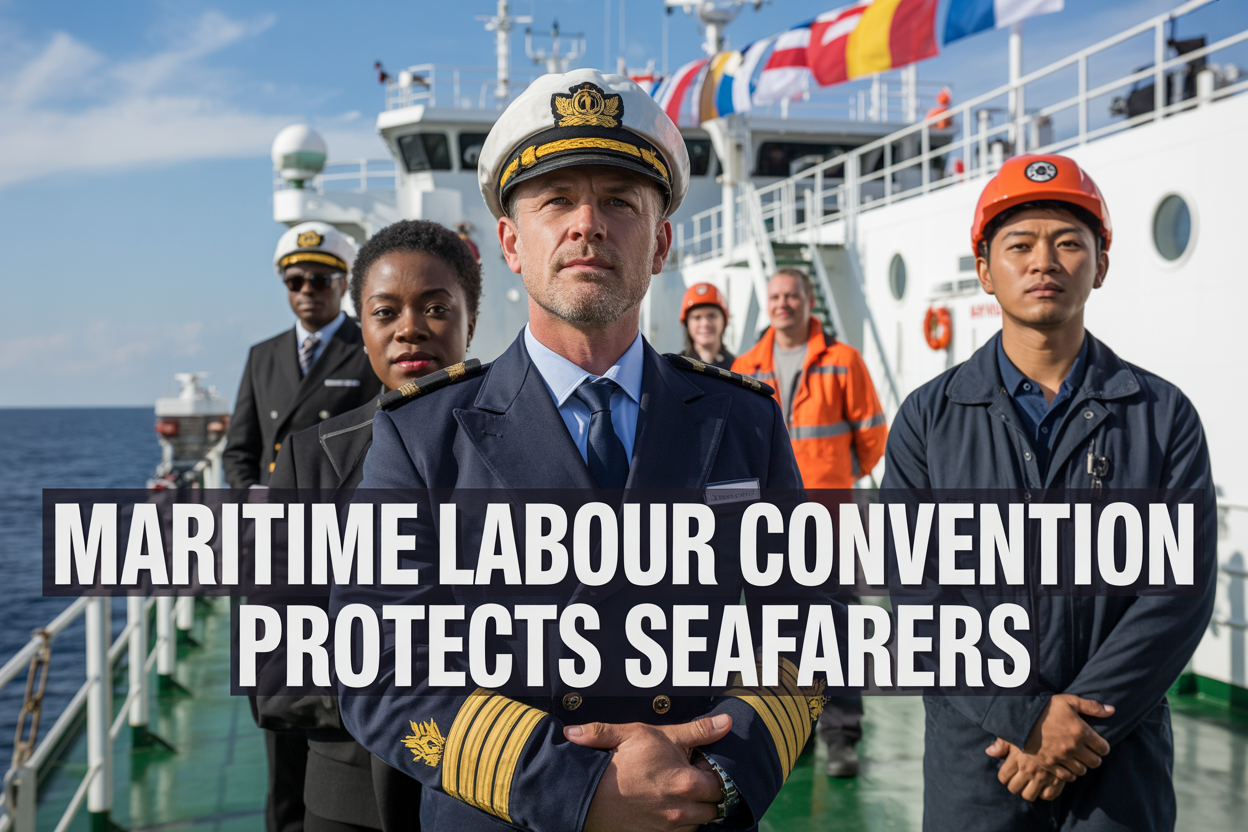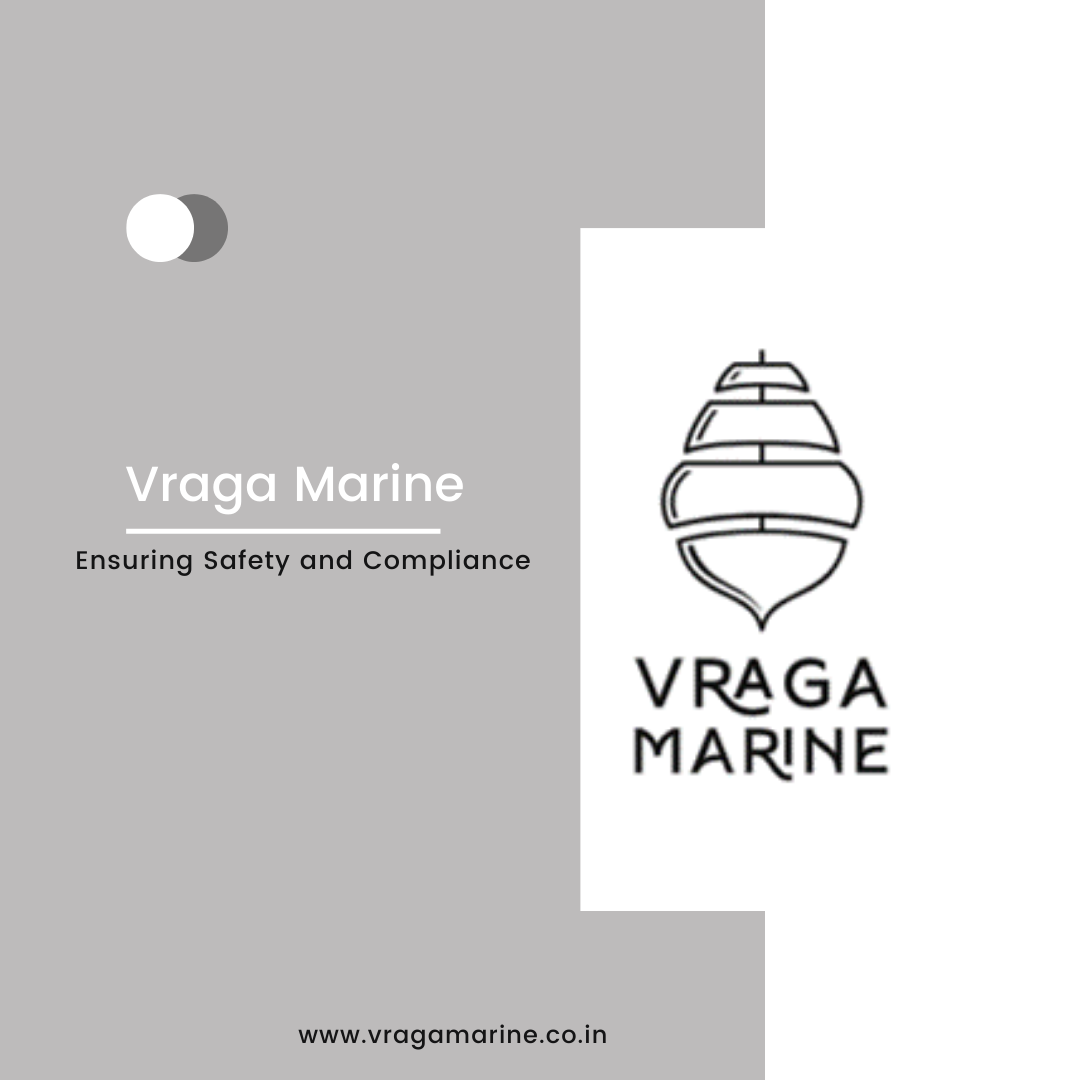The Maritime Labour Convention serves as the global “bill of rights” for the world’s 1.6 million seafarers, establishing minimum standards that protect maritime workers from exploitation and unsafe conditions. This comprehensive framework applies to ship owners, maritime employers, seafarers, and maritime industry professionals who need to understand their rights and obligations under international law.
Seafarers face unique challenges working far from home for extended periods, often in isolated conditions where labor violations can go unnoticed. The Convention addresses these vulnerabilities by creating enforceable standards that member countries must implement and monitor.
We’ll explore how the Convention guarantees essential working conditions like fair wages, reasonable working hours, and proper accommodation standards. You’ll also learn about the health and safety protections that require ship owners to provide medical care, safe working environments, and emergency response protocols. Finally, we’ll cover the complaint resolution system that gives seafarers practical ways to report violations and seek remedies without fear of retaliation.
Understanding the Maritime Labour Convention Framework

Global standards that ensure consistent seafarer protection worldwide
The Maritime Labour Convention establishes uniform standards across the global shipping industry, creating a safety net for seafarers regardless of where they work. Before this convention, seafarers faced wildly different working conditions depending on their vessel’s flag state, often leading to exploitation and unsafe working environments.
This framework covers four main areas: minimum requirements for seafarers to work on ships, conditions of employment, accommodation and recreational facilities, and health protection and medical care. These standards apply to all commercial vessels of 500 gross tonnage or more engaged in international voyages, plus smaller vessels on international commercial voyages.
The convention operates on a three-tier system: fundamental rights and principles, detailed regulations, and non-mandatory guidance. This structure allows countries to implement the standards while maintaining some flexibility in their approach, ensuring the convention remains practical for different maritime cultures and legal systems.
What makes these standards particularly powerful is their universal application. A Filipino seafarer working on a German-flagged vessel in international waters receives the same basic protections as a Norwegian crew member. This consistency prevents the race-to-the-bottom mentality that previously plagued maritime employment.
Legal obligations that bind signatory countries to uphold worker rights
Countries that ratify the Maritime Labour Convention take on binding legal commitments that reshape their national maritime laws. These obligations extend beyond simple policy recommendations – they become enforceable legal requirements that countries must integrate into their domestic legislation.
Each signatory nation must ensure that ships flying their flag comply with convention standards, regardless of where those vessels operate globally. This means updating national laws, establishing inspection systems, and creating enforcement mechanisms that can reach vessels anywhere in the world.
Port state control represents another crucial obligation. Countries must inspect foreign vessels entering their ports to verify compliance with convention standards. If violations are found, port authorities can detain vessels until problems are corrected, creating a powerful incentive for shipowners to maintain proper standards.
The legal framework also requires countries to establish competent authorities responsible for monitoring compliance, investigating complaints, and taking corrective action when violations occur. These authorities must have sufficient resources and legal powers to effectively carry out their duties.
Signatory nations also commit to cooperation and information sharing with other countries, creating a network of oversight that spans the globe. This collaborative approach ensures that violations in one jurisdiction can trigger action in others, making it much harder for non-compliant operators to simply move their operations elsewhere.
Enforcement mechanisms that guarantee compliance across international waters
The convention’s enforcement power comes from a multi-layered system that operates across different jurisdictions and involves multiple stakeholders. Flag state inspection forms the first line of defense, with countries required to regularly inspect their registered vessels and issue Maritime Labour Certificates to compliant ships.
Port state control serves as a crucial backup system. When vessels enter foreign ports, local authorities can board and inspect them for convention compliance. Ships without proper certification or those showing signs of violations can be detained until issues are resolved. This system creates immediate consequences for non-compliance and gives teeth to the convention’s requirements.
Complaint mechanisms allow seafarers to report violations without fear of retaliation. These systems must be accessible both onshore and at sea, with clear procedures for investigation and resolution. Countries must protect whistleblowers and ensure that complaints receive prompt, impartial attention.
The International Labour Organization provides oversight and technical assistance, helping countries implement the convention effectively. Regular reporting requirements keep the international community informed about implementation progress and challenges.
Financial security requirements ensure that seafarers have access to compensation when things go wrong. Shipowners must maintain insurance or other financial guarantees covering repatriation costs, outstanding wages, and compensation for injury or death. This removes the financial barriers that previously prevented many seafarers from accessing justice when their rights were violated.
Essential Working Conditions Guaranteed Under the Convention
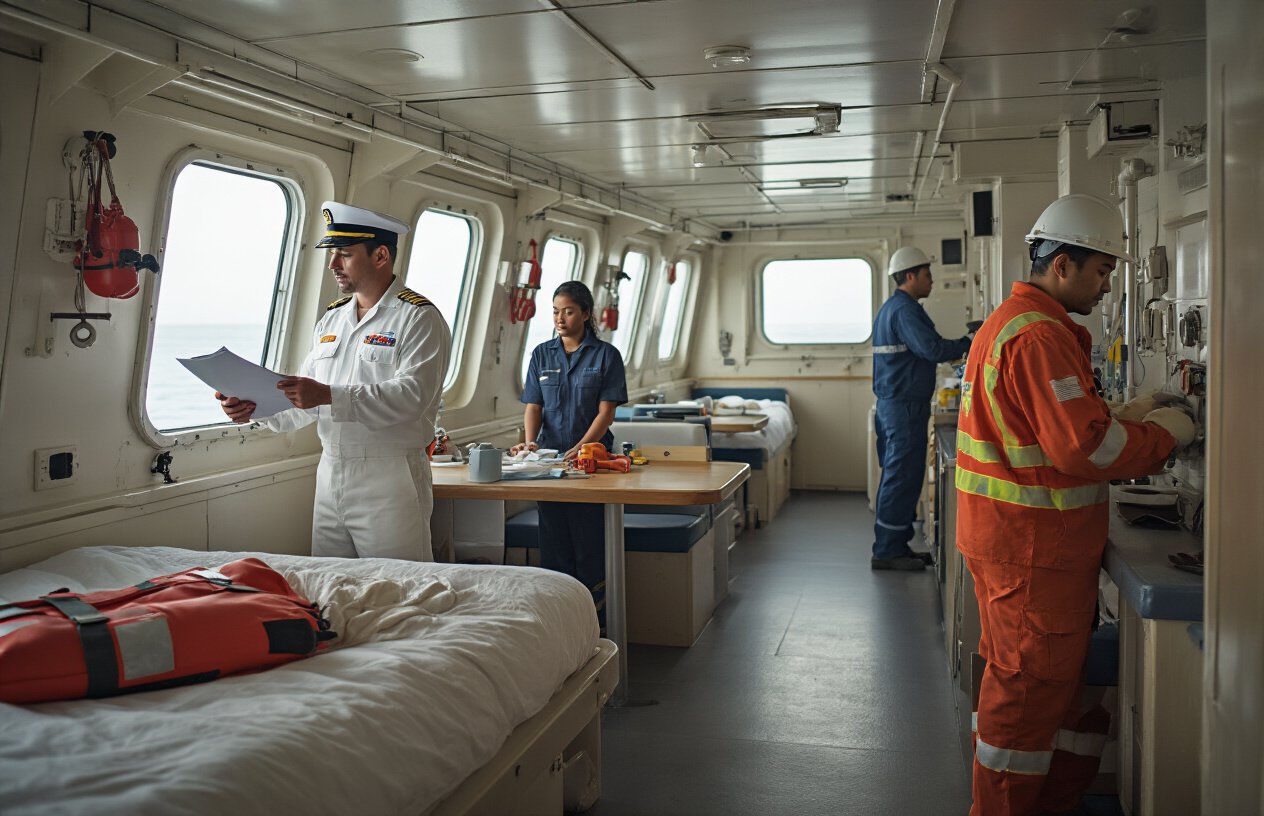
Maximum working hours that prevent dangerous fatigue and overwork
The Maritime Labour Convention sets strict limits on seafarer working hours to prevent the kind of exhaustion that can lead to accidents at sea. Seafarers cannot work more than 14 hours in any 24-hour period, and their total working time must not exceed 72 hours in any seven-day period. These limits aren’t just suggestions – they’re mandatory standards that shipping companies must follow.
The convention recognizes that maritime work involves unique challenges. Ships operate around the clock, and emergencies can happen at any time. However, chronic fatigue among crew members puts everyone at risk. When a tired navigator makes an error or an exhausted engineer misses a critical maintenance issue, the consequences can be catastrophic.
Watchkeeping personnel face additional protections. The convention requires that their duty schedules allow for adequate rest between watches. Night watches must be organized to prevent crew members from working excessive consecutive hours during the most challenging time of day.
Adequate rest periods that maintain crew safety and well-being
Rest requirements under the convention are just as important as working hour limits. Every seafarer must have at least 10 hours of rest in any 24-hour period, and this rest can be divided into no more than two periods. One of these rest periods must be at least six hours long.
Weekly rest provisions guarantee seafarers a minimum of 77 hours off duty in every seven-day period. This weekly rest period helps crew members recover from the physical and mental demands of shipboard life. The convention also allows for some flexibility during emergencies or drills, but any rest period reductions must be compensated as soon as possible.
The quality of rest matters too. Ships must provide sleeping quarters that are properly ventilated, heated, and insulated from noise. Crew members need genuine downtime, not just time away from their official duties. This means protecting rest periods from unnecessary interruptions and ensuring that accommodation areas remain quiet during designated sleep hours.
Fair wage standards that protect against exploitation
Maritime workers often face unique vulnerabilities when it comes to wages. They work far from home, sometimes for months at a time, making it difficult to seek help if they’re not paid fairly. The convention addresses this by establishing minimum wage standards and payment protections.
Seafarers must receive monthly wages that meet or exceed the amounts set by the International Labour Organization. These wages must be paid in full and on time, without unauthorized deductions. The convention also requires that seafarers have access to their wages while at sea, typically through allotment systems that allow them to send money home to their families.
Payment records must be clear and detailed. Every seafarer receives a monthly account showing their wages, any deductions made, and the exchange rates used for currency conversions. This transparency helps prevent wage theft and ensures that crew members understand exactly what they’re being paid.
The convention also protects seafarers from bearing the costs of their repatriation. If a contract ends or if a seafarer becomes ill or injured, the shipping company must cover the expenses of getting them home safely.
Safe accommodation requirements that ensure dignified living conditions
Living conditions aboard ships can make or break a seafarer’s experience. The convention sets detailed standards for crew accommodation, recognizing that ships serve as both workplaces and homes for their crews.
Sleeping rooms must provide adequate space and privacy. Single occupancy rooms are required for officers, while other crew members may share rooms with no more than one other person. Each sleeping room must have proper ventilation, lighting, and heating. The convention specifies minimum floor space requirements and mandates that beds be at least 198 centimeters long and 80 centimeters wide.
Sanitary facilities receive special attention in the convention. Ships must provide adequate numbers of toilets, washbasins, and showers for their crews. Hot and cold fresh water must be available at all times. Laundry facilities, including washing machines and areas for drying clothes, are mandatory requirements.
Common areas like mess rooms and recreation spaces help maintain crew morale during long voyages. The convention requires ships to provide appropriate facilities for meals and relaxation. These spaces must be properly ventilated and furnished, creating environments where crew members can socialize and unwind.
Food and catering standards ensure that seafarers receive nutritious meals throughout their contracts. Ships must carry adequate supplies of food and fresh water, and meals must be prepared in hygienic conditions by qualified personnel.
Health and Safety Protections for Maritime Workers
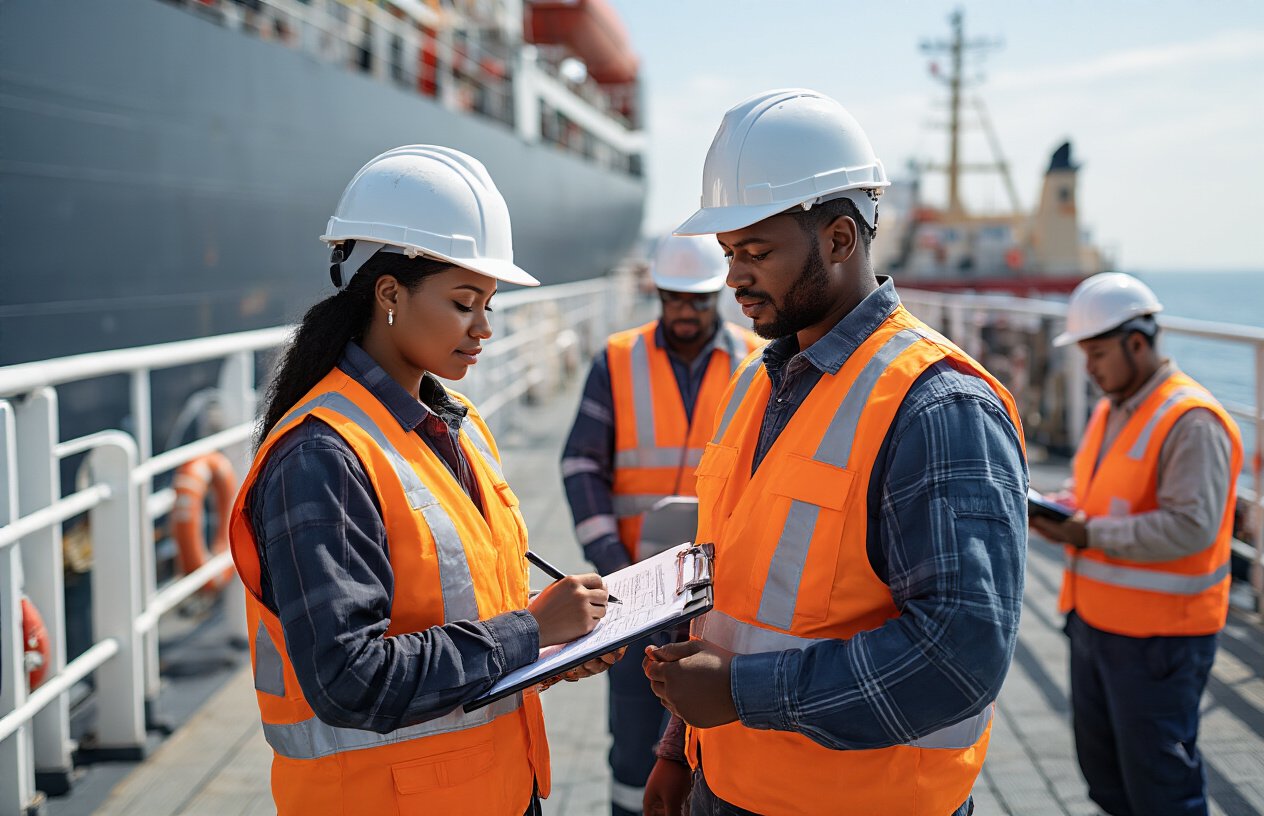
Mandatory medical care access during voyages and in ports
The Maritime Labour Convention guarantees every seafarer comprehensive medical coverage throughout their employment, creating a safety net that extends far beyond traditional shore-based healthcare systems. Ships carrying 100 or more crew members must maintain a qualified ship’s doctor on board, while smaller vessels require certified crew members trained in medical first aid and emergency care procedures.
When vessels dock at ports, seafarers gain access to shore-based medical facilities equivalent to those available to local residents. This provision becomes particularly valuable for routine health maintenance, specialized treatments, and procedures that can’t be performed at sea. The convention also mandates that shipowners cover all medical expenses, including emergency evacuations and repatriation for serious health conditions.
Medical equipment standards aboard vessels include essential pharmaceuticals, diagnostic tools, and emergency response supplies tailored to the ship’s size and voyage duration. Regular health examinations and fitness assessments help identify potential issues before they become emergencies at sea.
Workplace safety standards that reduce accident risks
Comprehensive safety protocols under the convention address the unique hazards of maritime work environments. Deck operations, machinery maintenance, cargo handling, and navigation duties each carry specific risk mitigation requirements that shipowners must implement and maintain.
Personal protective equipment provisions cover everything from weather-appropriate clothing to specialized safety harnesses for working at heights. Regular safety drills prepare crews for various emergency scenarios, while equipment inspections prevent mechanical failures that could lead to injuries.
Working time limitations play a crucial role in accident prevention, as fatigue significantly increases risk factors in maritime operations. The convention establishes maximum working hours and mandatory rest periods to ensure crew members remain alert and capable of making sound decisions during critical operations.
Emergency response protocols that save lives at sea
Maritime emergencies require immediate, coordinated responses that can mean the difference between life and death. The convention establishes detailed emergency procedures covering fire suppression, flooding response, man overboard situations, and medical emergencies that crew members practice regularly through mandatory drills.
Communication systems ensure vessels can contact rescue coordination centers and nearby ships when emergencies arise. Modern vessels carry multiple backup communication methods, including satellite systems that function in remote ocean areas where traditional radio coverage fails.
Life-saving equipment standards encompass lifeboats, life rafts, personal flotation devices, and survival supplies calculated to sustain the entire crew for extended periods. Emergency position-indicating radio beacons and other location devices help rescue teams locate vessels and survivors quickly.
Mental health support systems for isolated crew members
Extended periods at sea, separation from family, and the confined nature of ship life create unique psychological challenges that the convention addresses through comprehensive support systems. Regular communication opportunities with family members help maintain crucial personal connections that support mental well-being during long voyages.
Recreation facilities aboard vessels provide outlets for stress relief and social interaction among crew members. These spaces, along with access to entertainment systems and internet connectivity when available, help combat the isolation inherent in maritime work.
Professional counseling services, accessible through ship-to-shore communication systems, offer confidential support for crew members experiencing depression, anxiety, or other mental health challenges. Many shipping companies now provide 24-hour mental health hotlines staffed by trained counselors familiar with maritime-specific stressors.
Career Development and Training Rights
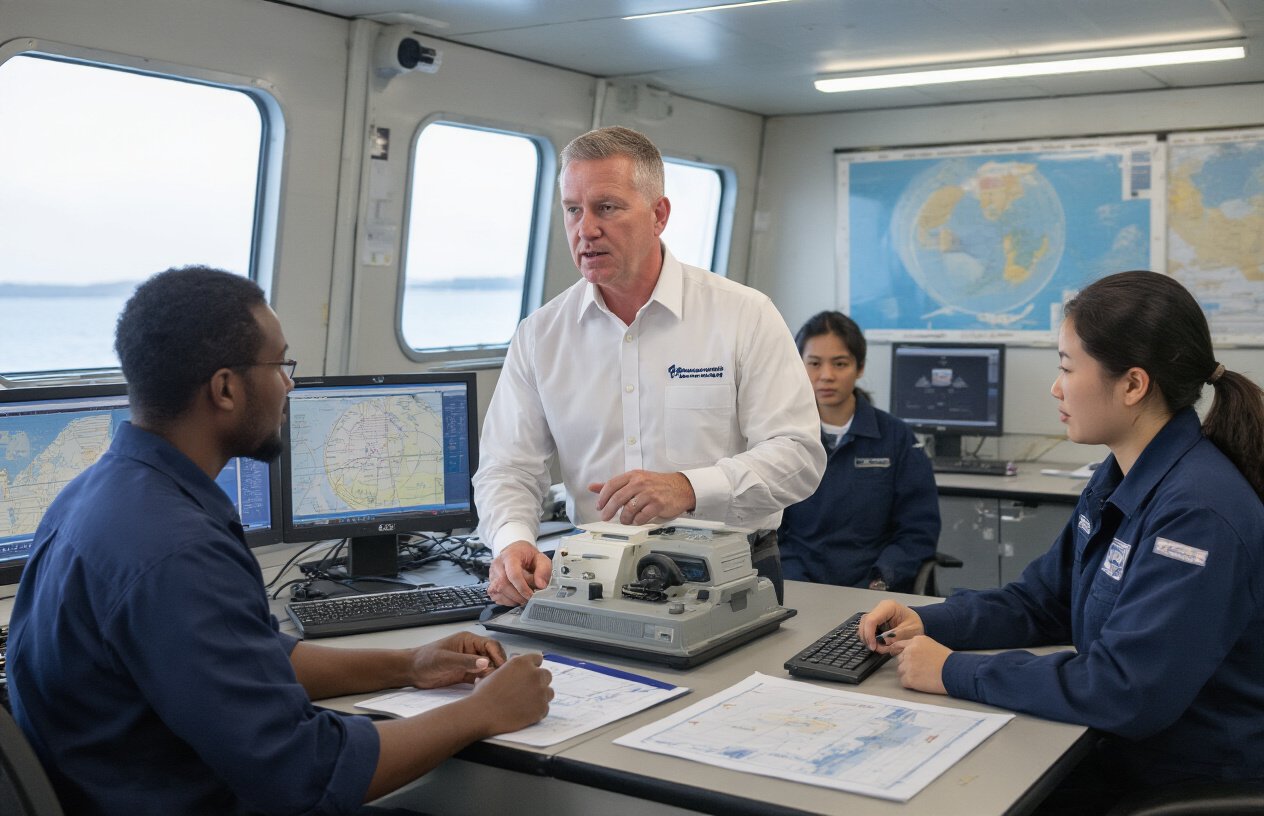
Professional Certification Programs That Advance Seafarer Skills
The Maritime Labour Convention establishes clear pathways for seafarers to develop their professional skills through internationally recognized certification programs. These programs go beyond basic safety training to include specialized technical skills, leadership development, and advanced maritime knowledge that directly translate to career advancement opportunities.
Seafarers can access structured certification programs covering engine room operations, navigation technologies, cargo handling systems, and environmental compliance procedures. The convention requires shipping companies to provide reasonable access to these programs, often through partnerships with maritime academies or online training platforms. Many certifications are stackable, allowing crew members to build expertise progressively while working aboard vessels.
The STCW (Standards of Training, Certification and Watchkeeping) framework integrated within the convention ensures that skills gained through these programs are recognized globally. This means a seafarer certified in one country can leverage those qualifications anywhere in the world, creating genuine mobility in their career development.
Continuous Education Opportunities That Enhance Career Prospects
Educational advancement under the Maritime Labour Convention extends well beyond mandatory training requirements. Seafarers have protected rights to pursue higher education, vocational training, and specialized courses that position them for shore-based roles or senior maritime positions.
The convention supports flexible learning arrangements that accommodate the unique challenges of shipboard life. This includes distance learning programs, correspondence courses, and block-release study periods that allow seafarers to complete degrees or professional qualifications while maintaining their sea careers.
Companies are encouraged to provide study leave, financial assistance, or tuition reimbursement programs. Many seafarers use these opportunities to earn business degrees, maritime law qualifications, or technical certifications in emerging fields like renewable energy systems or digital navigation technologies. The convention protects seafarers from discrimination based on their educational pursuits and ensures that time spent in approved training programs counts toward experience requirements for advancement.
Career Pathway Protections That Prevent Discrimination
The convention establishes strong anti-discrimination measures that protect seafarers’ career development regardless of nationality, race, gender, age, or religious beliefs. These protections ensure that promotion opportunities are based on merit, qualifications, and performance rather than personal characteristics or favoritism.
Career pathway protections include transparent promotion criteria, fair performance evaluation systems, and appeals processes for disputed advancement decisions. Seafarers cannot be denied training opportunities or career advancement based on discriminatory factors, and companies must demonstrate objective justification for personnel decisions.
The convention also addresses gender equality in maritime careers, requiring equal access to training, certification, and leadership roles for female seafarers. Age discrimination protections ensure that experienced seafarers aren’t automatically excluded from advancement opportunities simply because of their age, while younger seafarers receive equal consideration for development programs.
These protections create a merit-based system where seafarers can plan their careers with confidence, knowing that advancement depends on their skills, dedication, and performance rather than factors beyond their control.
Complaint and Grievance Resolution Benefits
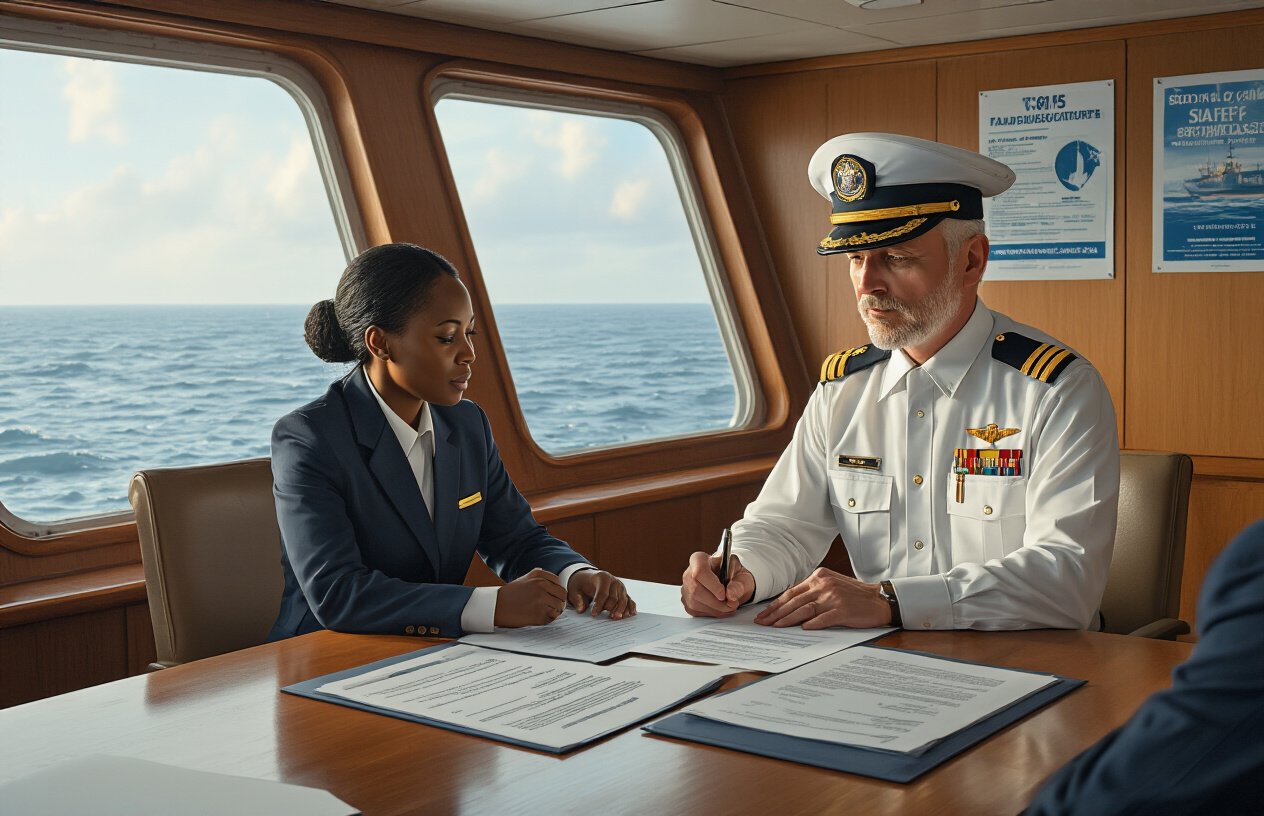
Confidential reporting systems that protect whistleblowers from retaliation
The Maritime Labour Convention establishes robust reporting mechanisms that allow seafarers to voice concerns without fear of reprisal. These systems create safe channels where workers can report violations, unsafe conditions, or misconduct while maintaining their anonymity. Ship operators must implement designated reporting procedures that protect the identity of those who come forward with legitimate complaints.
Retaliation protection goes beyond simple confidentiality. The Convention requires companies to have clear anti-retaliation policies that specifically prohibit discrimination, harassment, or dismissal of seafarers who report violations in good faith. These protections extend to witnesses and those who cooperate with investigations. Many shipping companies now use independent third-party reporting platforms that completely separate the complaint process from direct management oversight.
Fair investigation procedures that ensure justice for all parties
When complaints arise, the Convention mandates structured investigation procedures that balance the rights of all involved parties. These processes must be transparent, timely, and conducted by qualified personnel who understand maritime law and industry practices. Investigators typically include maritime professionals with relevant expertise rather than general human resources staff.
The investigation framework ensures both complainants and respondents receive fair treatment throughout the process. This includes:
- Clear timelines for each phase of the investigation
- Access to evidence and documentation relevant to the case
- Right to representation during formal proceedings
- Impartial decision-making free from conflicts of interest
- Documentation of findings with detailed reasoning
Rapid resolution processes that minimize disruption to seafarer careers
Speed matters in maritime dispute resolution since prolonged conflicts can derail careers and create ongoing workplace tensions. The Convention emphasizes quick resolution mechanisms that address issues before they escalate into major disputes. Most cases should reach initial resolution within 30-60 days, depending on complexity.
Priority handling applies to complaints involving safety hazards, wage disputes, or working condition violations that directly impact seafarer welfare. Emergency procedures exist for situations requiring immediate intervention, such as abandonment cases or serious safety breaches. These fast-track processes help seafarers maintain employment continuity while ensuring their rights remain protected.
Legal support access that empowers workers to defend their rights
Seafarers often work in international waters under complex jurisdictional frameworks, making legal support essential for effective rights protection. The Convention ensures access to qualified legal assistance through multiple channels, including flag state authorities, port state inspections, and seafarer welfare organizations.
Many countries now provide free legal consultation services specifically for maritime workers, covering issues like contract disputes, unpaid wages, and working condition violations. International seafarer unions also offer legal support networks that span multiple jurisdictions, helping workers navigate complex international maritime law. These resources include multilingual support staff who understand the unique challenges facing seafarers from different cultural backgrounds.
Digital platforms increasingly provide 24/7 access to legal guidance, allowing seafarers to seek advice regardless of their location or time zone. This accessibility proves crucial for workers on long voyages who may need immediate legal consultation when problems arise at sea.
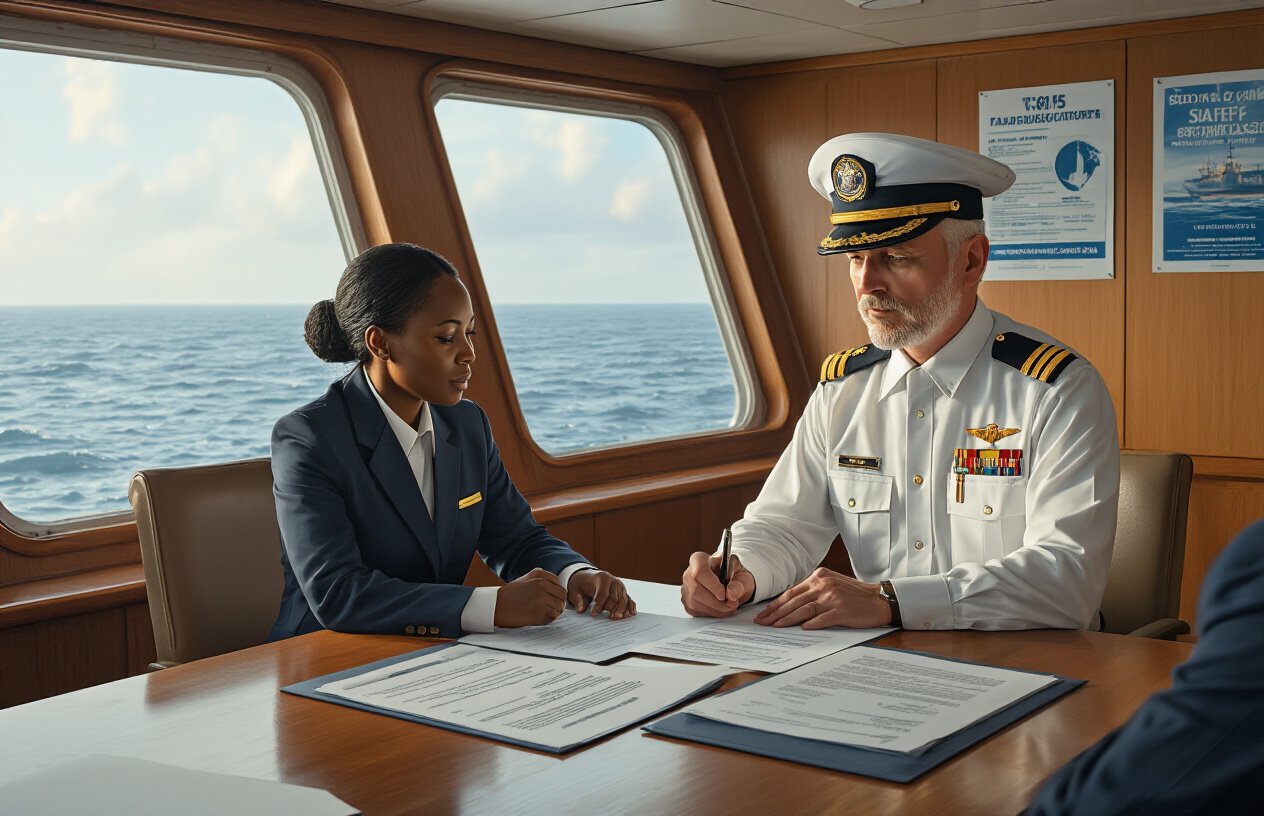
The Maritime Labour Convention stands as a game-changer for seafarers worldwide, creating a solid foundation of rights that every maritime worker deserves. From guaranteed working conditions and comprehensive health protections to career development opportunities and fair grievance processes, this framework ensures that those who spend months at sea aren’t forgotten or exploited. The Convention doesn’t just put rules on paper—it creates real accountability that helps seafarers know their worth and demand better treatment.
If you’re working in the maritime industry or considering a career at sea, familiarize yourself with these protections and don’t hesitate to speak up when your rights aren’t being respected. The Convention only works when seafarers know what they’re entitled to and feel empowered to claim those rights. Your safety, fair wages, and professional growth matter, and this international framework exists specifically to make sure you get what you deserve on every voyage.

